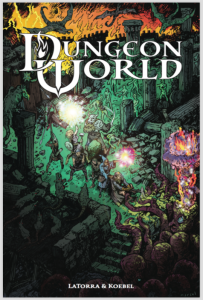 A while back I was preparing to start up a family role-playing campaign. My plan was to start us off with AD&D, which is the role-playing game I had played most often. Annika was around 10 at the time and I though it might be a tiny bit complicated, so I asked my Facebook and Twitter friends if they had suggestions for simpler rule sets. Immediately, I got recommendations to check out Dungeon World and Basic Fantasy Role-playing Game. And I did.
A while back I was preparing to start up a family role-playing campaign. My plan was to start us off with AD&D, which is the role-playing game I had played most often. Annika was around 10 at the time and I though it might be a tiny bit complicated, so I asked my Facebook and Twitter friends if they had suggestions for simpler rule sets. Immediately, I got recommendations to check out Dungeon World and Basic Fantasy Role-playing Game. And I did.
So began my journey down the rabbit-hole of indie tabletop role-playing games.
I’ve come up for air and want to share what I’ve found. Lots of it is great. Some of it is really weird. Most of it is cheap. A surprising amount of it is free.
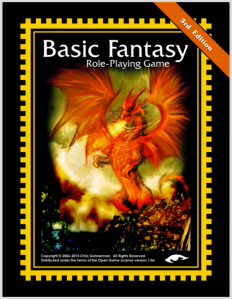 While some indie RPGs are sold as bound books just like D&D or as print-on-demand books, they are
While some indie RPGs are sold as bound books just like D&D or as print-on-demand books, they are
most commonly released as PDFs so, many of them get regular updates and improvements based on player feedback. Most indie RPGs that are available in print are also available as PDFs or even .mobi or .epub files for use on Kindle or other e-readers. I love this feature and hope every game publisher will eventually embrace this model. Some larger publishers, like Paizo already have.
Below are some of the more interesting ones I’ve come across. I haven’t played them, but I have read them. When I do get a chance to play them, I’ll write up a review for each. This is just the tiniest toe-dip into the world of indy RPGs.
New Takes on Familiar Territory
Dungeons and Dragons looms large in the world of tabletop role-playing, and while recent updates to the official rules have brought many new players to D&D, they were not always embraced by long-time players. Capturing the feeling of the original D&D rules, world and monsters is the goal of a whole subset or independent tabletop RPGS. Sometimes called OSR (Old School Revival) games, or retroclones, most are based at least in part on the original D&D rulesets (OD&D through AD&D/2nd Edition).

Whitehack – Based on the original white box edition of D&D, Whitehack uses the familiar attributes: Strength, Dexterity, Constitution, Intelligence, Wisdom, and Charisma. There are three classes: The Deft, the Strong and the Wise that map generally to Thief/Fighter/Magic-User. Whitehack is only available as a print-on-demand book from Lulu, and is very nicely designed. Like it’s rules, it’s clean, simple and easy to use and only 64 pages.
 The Black Hack – This one is a true “rules-light” D&D homage. The Black Hack not only streamlines classic rules and mechanics, but also incorporates some modern RPG features like advantage/disadvantage. All this in just 16 pages! Because of it’s clarity and simplicity, The Black Hack has inspired its own its own variants like The Space Hack (sci-fi setting), The Pirate Hack (um, pirates), and The Cat Hack (you play cats!). There are lots of them.
The Black Hack – This one is a true “rules-light” D&D homage. The Black Hack not only streamlines classic rules and mechanics, but also incorporates some modern RPG features like advantage/disadvantage. All this in just 16 pages! Because of it’s clarity and simplicity, The Black Hack has inspired its own its own variants like The Space Hack (sci-fi setting), The Pirate Hack (um, pirates), and The Cat Hack (you play cats!). There are lots of them.
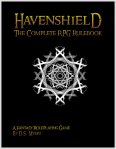
Havenshield – This one is free and uses only six-sided dice. It also includes an interesting three-dice advantage/disadvantage system and also lets players use luck points to re-roll, do maximum damage or gain information from an NPC. The 234 page PDF even includes a large, illustrated catalog of monsters to use in your campaign. A separate players’s handbook for Havenshield is also available.
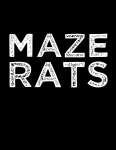
Maze Rats – This one is both one of the simplest and also the most complete, and it’s one of my favorites. I originally heard about Maze Rats on a special English-language episode of the Signaler från Zonen podcast by my favorite Swedish tabletop game publisher, Free League/Fria Ligan. Created by fantasy cartographer, Ben Milton, Maze Rats can be printed, folded and stapled into a slim, 28-page booklet. The bulk of the game is comprised of truly excellent random content tables of various types, which could also be useful tools to enhance any other roleplaying game. PDF available as a “pay what you want” download from DriveThrough RPG (I paid US$5.00).
Apocalypse World and Its Offspring
 When Vincent Baker released his lightweight, post-apocalyptic RPG, Apocalypse World, in 2010, he made the unique rule system available for or others to use as a framework to build their own games. And boy, did they. There are now dozens of independent games that are “Powered by the Apocalypse.”
When Vincent Baker released his lightweight, post-apocalyptic RPG, Apocalypse World, in 2010, he made the unique rule system available for or others to use as a framework to build their own games. And boy, did they. There are now dozens of independent games that are “Powered by the Apocalypse.”
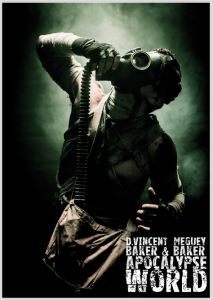
Apocalypse World – Unlike the lovably goofy TSR classic, Gamma World, Apocalypse World is an adult, post-apocalyptic role-playing game. The 11 character classes are called playbooks and each has their own set of unique skills or moves. Characters in a party also have a history with each other, which is articulated during character introductions. Baker’s writing style matches the world he’s created: bunt, expletive-laden, and dark. It’s a joy to read. Here’s his description of the Angel playbook:
When you’re lying in the dust of Apocalypse World guts aspilled, for whom do you pray? The gods? They’re long gone. Your beloved comrades? Fuckers all, or you wouldn’t be here to begin with. Your precious old mother? She’s a darling but she can’t put an intestine back inside so it’ll stay. No, you pray for some grinning kid or veteran or just someone with a heartshocker and a hand with sutures and a 6-pack of morphine. And when that someone comes, that’s an angel..
Apocalypse World is a unique combination of a well-formed setting and fantasy, created with a unique voice which also has an innovative ruleset…oh and released into the wild with the designer’s blessing and encouragement to use it to make other games.
 Dungeon World – “I love Apocalypse World. Wouldn’t it be cool if D&D worked like that?” Yes. Welcome to Dungeon World. Familiar D&D classes, races and abilities are here, but so are explicit bonds between characters, established before play begins. Dungeon World uses Apocalypse World’s streamlined move system, which resolves by rolling two six-sided dice, and adding modifiers. The resulting number produces one of the following possible outcomes:
Dungeon World – “I love Apocalypse World. Wouldn’t it be cool if D&D worked like that?” Yes. Welcome to Dungeon World. Familiar D&D classes, races and abilities are here, but so are explicit bonds between characters, established before play begins. Dungeon World uses Apocalypse World’s streamlined move system, which resolves by rolling two six-sided dice, and adding modifiers. The resulting number produces one of the following possible outcomes:
- 10+: You do it with little trouble
- 7–9: You do it, but with complications or trouble
- 6-: The GM says what happens
That’s it. Damage is dealt, experience is gained and collaborative storytelling is encouraged over crunchy mechanics.
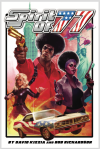
Spirit of ’77 – Muscle cars, wrestlers, detectives and disco are all part of this alternate, heightened, 1970s game world. To add some spice to all this 70s action goodness, the game also includes X-Tech, secret hyper-science controlled by the government. Thanks to X-Tech, The Six Million Dollar Man and Dynomutt are both plausible in the world of Spirit of ’77! Developers Monkey-Fun Studios have also released several adventure modules for Spirit of ’77.

The Warren – But what if I want to role-play semi-naturalistic rabbits living in an endangered warren? Yep. Apocalypse World can handle that too, although modified a bit to better suit the cunicular nature of this game’s fantasy. It’s basically your Watership Down daydreams come to life. Hail Frith!

Monsterhearts – Sort of Buffy, Sort of Ginger Snaps, A bit like Twilight if you squint. But Monsterhearts is not really like any of them. Here’s how author Avery Alder describes it:
When you play this game, you pretend that you are a messed-up teenage heartbreaker who’s secretly a monster. Or maybe your character isn’t quite a teenager anymore – maybe they’re twenty three. Maybe your character is a vampire and you’re actually two hundred and seventy years old, but you’re posing as a teenager. That’s all fine. What’s important is that your character is caught in the midst of a volatile transition, just like a teenager is.
And there is sex and violence…and hormones…and blood.
It’a testament to the simplicity and flexibility of the Apocalypse World that it’s core rules have been applied to such a diverse group of themes and fantasies. And there are so many games that use the Apocalypse World Engine.
Wait…what did you say that game is about?
Yes, they make an excellent alternative to games from Big Tabletop, but where indie games really shine is when they get really weird, serve a small niche market, or simply go places no large publisher would go. These. These are the games that will get you and keep you on the indie RPG bandwagon.
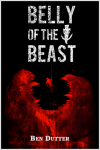
Belly of the Beast – What is the setting for this game? Why, it’s a civilization that has taken root inside the gut of an enormous monster that fell to Earth and swallowed entire cities whole. Scavengers survive inside for generations, eking out an existence within…The Belly of the Beast. You might want to buy a print version of this one. Well written, well designed and full of beautiful full-color artwork. It looks like a large publisher spent money on producing it…which they wouldn’t. Belly of the Beast is one of a handful of RPGs by designer Ben Dutter that use his Ethos Engine, which has players roll a pool of six-sided dice to determine outcomes and also to give them advantages, or Instincts to help survive the harsh world of The Evergut.

Don’t Rest Your Head – There is more to this world than you can see. Sleeping keeps us from seeing it, and if you stay awake long enough you become Awake and not only can you see the parallel world of the Mad City around you, but you gain access to strange powers…oh, and Nightmares are stalking you. And so are the Paper Boys. Much as London exists atop Neil Gaiman’s Neverwhere or as the Twilight/Gloom exists below all things in Lukyanenko’s Night Watch, The Mad City is there, but normal people can’t see it. You are not normal. You have insomnia. You are Awake. Players balance Discipline, Exhaustion and Madness with each dice roll to resolve conflict and there are coins that can be spent on despair or hope. Don’t Rest Your Head is a good bet for those looking for a darker, Nightbreed vibe for their gaming group.
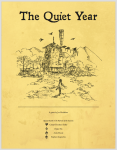
The Quiet Year – This is a single-session, collective map-drawing game about a small community surviving after the collapse of civilization. Players capture the story and alter it by adding to the map they are drawing together. You just need the rules, paper, pencils, some six-sided dice, tokens of some kind, and a deck of standard playing cards. Play progresses through a symbolic year with each suit of cards representing a season, and players add details about their community as they go, building on each other’s work. In the loose narrative framework, “The Jackals” have been driven off and the community has a year to prepare for the arrival of the “Frost Shepherds.” Projects are devised and worked on, problems arise, scant resources are exhausted, discussions happen and sometimes weird, post-civilization things occur. The Quiet Year is written by Monsterhearts developer, Avery Alder.

Our Last Best Hope – “Our Last Best Hope is about heroic sacrifice in the face of an impossible burden.” Index cards, markers, dice and crisis are the ingredients that make this RPG go. The base game includes three missions: Space, Snow, and Zombie Apocalypse, and each is modified with a randomized crisis and limit. The Space mission might be a dealing with an alien derelict on a collision course with Earth, or a malfunctioning orbital weapons platform is about to fire nukes at the Earth. Each player chooses a pre-defined role: Engineer, Soldier, Doctor or Scientist. There is no traditional GM, instead one player acts as the Captain of the mission. It’s a pretty neat mechanism for generating scenarios to overcome in a heroic manner under pressure, and characters die, but Death Cards ensure they usually do so in a way that pushes the mission forward. Oh, and players whose characters die can keep playing! On their turn, they describe what their character did in a flashback that has consequences for the current crisis.
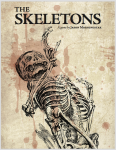
The Skeletons – “Arise and protect the tomb, skeletal guardians!” Rather than playing the part of dungeon delvers, in The Skeletons, players take on the title role of the undead minions who must defend the crypt from marauding interlopers. It’s a simple, moody, cooperative, storytelling game. The skeletons slumber, awaking periodically when the crypt is disturbed. When they are animated and fighting, the skeletons remember flashes of their prior lives as humans. These memories take the form of questions asked and answered by players during certain rounds. This highly collaborative, existential game starts with players drawing a map of the barrow they defend and ends in their defeat or their eternal slumber. While reading the rule for The Skeletons, I couldn’t help by think of Dave Rapoza and Dan Warren’s excellent Steve Lichman comics which offer a lighter look at being the monsters living in the dungeon.

Ten Candles – One morning, the sun just didn’t come up. A shroud blocked the sun, the stars communications satellites. Everything dark. “And then, They came…Whatever They are, the only fact that mattered became clear real fast. They hated one thing more than us. Just one. The light.” Ten Candles is a tragic horror storytelling game to play during one session, in the dark. It uses ten tea-light candles to both set the mood and also to progress gameplay. With every failure, a candle is extinguished. And even if the characters don’t fail, the candles will go out on their own. “The end always comes, one way or another.” Like The Skeletons, Ten Candles is as much about mood and shared experience as building a story together.

Apes Victorious – Daniel Proctor has written several respected OSR games including Labyrinth Lord, a D&D-style game and first edition Gamma World homage, Mutant Future. For his latest game, Apes Victorious, Proctor gets his inspiration not from a classic playing franchise, but instead from the 1970s Planet of the Apes films and TV series. And, instead of simply deliver the licensed PotA game we’ll never get, he expands and enhances the world in logical and satisfying ways. In addition to the familiar, chimpanzee, orangutan and gorilla races, we also get bonobos! In addition to the humans, apes and underdwellers inhabiting this post-nuclear far-future Earth, we also get a resurgence of megafauna and some lightly mutated animals as well. This is the “damn dirty apes” RPG you didn’t know you wanted! Goblinoid Games offers free “no-art” PDF versions of several games (including Apes Victorious!).
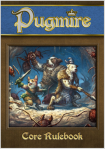
Pugmire – From apes to dogs. Pugmire had its origins in a successful Kickstarter campaign which promised a D&D-style fantasy RPG that would let you play as intelligent dogs with hands. In the future presented in Pugmire, humans are long gone, leaving behind their faithful companions to create a new society, which has progressed to a standard fantasy medieval stage of technology. Most dogs worship absent humans as gods, and strive to be “good dogs.” Pugmire is a complete multi-session RPG system and a playable, early-access PDF is available now. The rules are straightforward and the developers have noted (correctly, I think) that this would make an excellent introduction to role-playing for new players, and the final print rules will include an introductory adventure. Don’t worry, cat people, The Monarchies of Mau expansion is already in the works.
Rules-Light and Ultra-Light Micro RPGs
“Maze Rats is 28 pages long? Who has time for that! Too long! Too many rules! I want something tiny.” Well, my friend, are you in luck. There are a surprising number of RPGs out there that distill their rules down to a page or two, yet are totally playable. Here is a sampling.
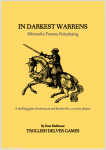
In Darkest Warrens – Just two pages of rules, including stats for 20 monsters! It’s the absolute simplest ruleset for fantasy role-playing, and has spawned two expansions.

Cthulhu Dark – How about a complete Lovecraftian horror game that fits on a one-page, tri-fold pamphlet? It includes an elegant system for tracking your “insanity” with a six-sided die, so you don’t even need a character sheet. I’d love to print out a bunch of these and put them in with the tourist pamphlets at a motel in Anaheim.
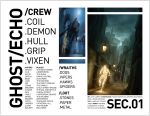 Ghost/Echo – Bare bones sci-fi adventure with a command-line aesthetic. Ghost/Echo even has room on one of its two pages for some nice, mood-setting artwork. Goals and Danger are resolved with a single six-sided die roll. If you are prepared for the action, roll two dice to increase your chances!
Ghost/Echo – Bare bones sci-fi adventure with a command-line aesthetic. Ghost/Echo even has room on one of its two pages for some nice, mood-setting artwork. Goals and Danger are resolved with a single six-sided die roll. If you are prepared for the action, roll two dice to increase your chances!

Wizard Cops – “You are a cop that polices wizards. You might also be a wizard. You have 10 Gold, 3 Reputation and 1 Life. Reputation is worth more than any Gold, Life is worth more than any Reputation. When a conflict happens, wager an amount of something and add a d4 to the value. Highest wins and the story goes their way, and the loser loses everything they wagered. If you lost, you can raise your bet higher than the other person and roll another d4. If you run out of anything, you die.” Congratulations, you have now read over half of the rules for Wizard Cops.
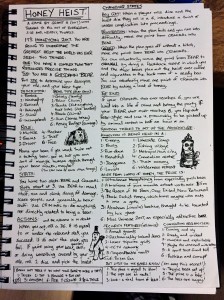 Grant Howitt’s One-Page RPGs – Finally, my new favorite thing. Every month, Grant Howitt makes a hand-written/drawn, one-page RPG. His Patreon supporters get early or exclusive access for US$5. Here are the titles of some of his games: Goblin Quest, Havoc Brigade, Doctor Magnethands, Drunken Bear Fighter, One Last Job, Warrior-Poet, Exodus, and Royal Blood. I was first made aware of Grant’s work when a friend posted a link to Honey Heist which he describes as a “game in which you play a criminal bear with two stats: CRIMINAL and BEAR.” There is a bonus “hat table” to add a bit of flair to your honey-thieving bear.
Grant Howitt’s One-Page RPGs – Finally, my new favorite thing. Every month, Grant Howitt makes a hand-written/drawn, one-page RPG. His Patreon supporters get early or exclusive access for US$5. Here are the titles of some of his games: Goblin Quest, Havoc Brigade, Doctor Magnethands, Drunken Bear Fighter, One Last Job, Warrior-Poet, Exodus, and Royal Blood. I was first made aware of Grant’s work when a friend posted a link to Honey Heist which he describes as a “game in which you play a criminal bear with two stats: CRIMINAL and BEAR.” There is a bonus “hat table” to add a bit of flair to your honey-thieving bear.
Again, I haven’t played any of these games, but I read and enjoyed all of them. There are sooooooo many excellent indie pen-and-paper RPGs out there, and so many of them are cheap or free. Drive Thru RPG, Lulu and Kickstarter are three great places to start:
Please share what you discover in the comments, and I promise at least a few full-fledged reviews soon. I just need to find time to play!
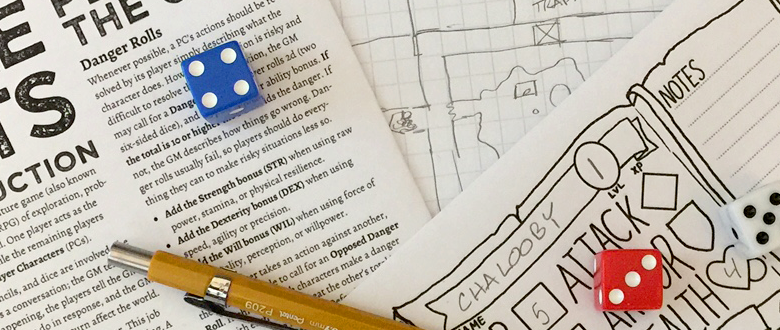


If you like these, you will probably like GATEWAY RPG. It’s a Free rules lite d20 system that can be used for any setting or theme. It uses some of the mechanics of D&D5e but in a streamlined way focusing on little to no math or clunky extra rules.
http://www.drivethrurpg.com/product/209636/GATEWAY–The-d20-Tabletop-Roleplaying-Game
Excellent! I’ll check it out. I’ve discovered so many other games since I published this article. Probably update/follow-up time!
Wonder full collection of titles, half of which were completely new to me and I thought I know a lot of indy titles. There’s also my own little game, for SciFi fans who like Star Trek like episodic gameplay: http://www.drivethrurpg.com/product/240319/explorers-Core-Rulebook–Print-Edition
If you are looking for games to play with kids, this one was build for that purpose:
https://www.drivethrurpg.com/product/134355/PERK-Core-Rulebook
Good list, with quite a few items I hadn’t known or already half-forgotten 😉
Though I am missing a few games I thought were staples:
– Fiasco
– Microscope, Kingdom, Follow… anything by Ben Robbins
– Primetime Adventures